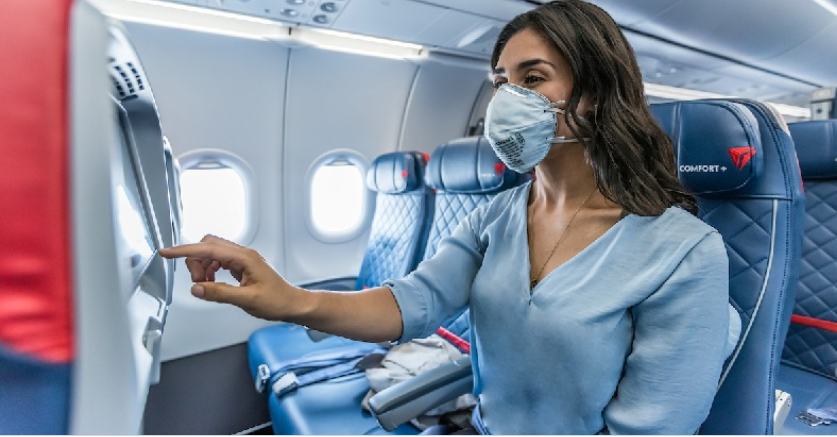
Delta Air Lines will continue blocking off its middle seats through the end of the year, while increasing the maximum number of passengers allowed on each flight.
Atlanta-based Delta will restrict the number of seats for sale on its narrowbody jets until Jan. 6, 2021, in an effort to maintain social distancing on its flights amid the ongoing COVID-19 pandemic.
At the same time, Delta will raise its load factor cap to 75% in coach and premium economy, compared to 60% currently, while first class seating will remain capped at 50%.
Despite the higher cap, Delta will still block off middle seats for passengers traveling solo or in pairs. Starting in October, however, groups of three or more guests traveling together will have the option to book a complete row of seats, including the middle seat, until the 75% load factor cap is reached. In practice, that means Delta’s new upper limit will fall in a range of 60-75%, depending on how many groups of three or more passengers are on each flight.
“The load factor cap will not increase beyond 75%, but we are allowing parties of three or more to select middle seats. Not every middle seat will be empty, but flights will continue to not be filled to capacity,” Delta spokeswoman Lisa Hanna explained.
The 75% cap applies to aircraft configured in the common 3x3 layout, including almost all Boeing and Airbus single-aisle jets. Flights on regional aircraft and mainline cabins configured in the less common 3x2 layout will see an aisle blocked off, as is the case for Delta’s Boeing 717 fleet. Widebody jets, on the other hand, will return to full capacity on Oct. 1, a decision the company ascribed to the larger, twin-aisle cabins having “more space and privacy built in.”
“We believe that taking care of our customers and employees and restoring confidence in the safety of air travel is more important right now than filling up every seat on a plane,” Delta chief customer experience officer Bill Lentsch said in a statement.
Delta is one of just a handful of U.S. carriers to continue blocking seats on its aircraft, along with Alaska Airlines, JetBlue Airways and Southwest Airlines—all of which will see their own policies expire during October unless extended.
Despite the seating restrictions, airlines still rarely end up booking flights to capacity, with industry-wide domestic load factors at around 40% as of Aug. 9, according to Bloomberg analyst George Ferguson.
The average number of passengers per domestic flight was just over 50 people as of Aug. 16, compared to around 99 passengers in 2019, according to Airlines for America. The group estimates carriers would need to achieve load factors of 91% to recoup the costs of flying during the 2020 fourth quarter.
Passenger throughput tracked by the U.S. Transportation Security Administration (TSA) was 70% lower than 2019 levels during the week ending Aug. 16, the third consecutive week of gains, according to Cowen analyst Helane Becker. More than 862,000 passengers flew in the U.S. on Aug. 16, setting a new daily record as the busiest day for air travel so far this summer.





